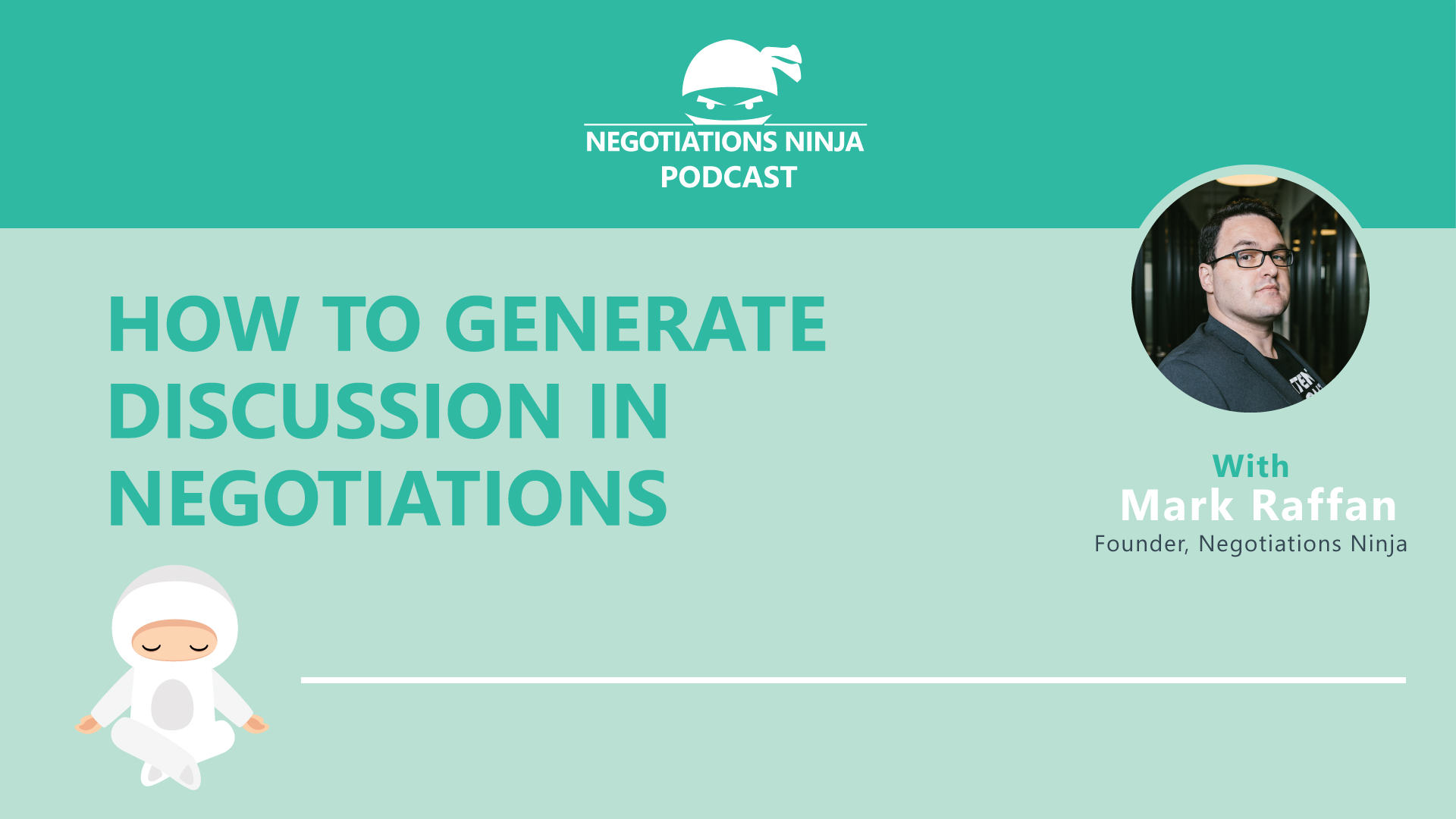Many people in procurement are data-driven, analytical, and tend to be introverted. So how do you generate discussion in a negotiation so that the other party begins to talk about their business, opportunities, needs, and their wants? In this episode of Negotiations Ninja, I’ll walk you through a formulaic process to guide the conversation to get what you need (and assess what the other party needs). You can then use that information as leverage to get what you need from the negotiation later on.
Outline of This Episode
- [1:32] How to generate discussion in negotiations
- [3:09] Selling into multiple stakeholder groups
- [7:40] Dissecting the question funnel
- [19:46] Roleplay questions before the discussion
Selling into multiple stakeholder groups
You need to remember that you aren’t just selling into one stakeholder, you’re selling into multiple stakeholder groups: the business, procurement, operations, finance, and more. There is usually one ultimate decision maker but that person is influenced by all of the parties involved. All of those groups have different needs, which makes your job complicated.
The first thing you need to do is think about who someone is within the context of their job. What are their core wants and needs in the negotiation? What do they want to achieve? Procurement people have to prioritize cost savings, risk reduction, value-added benefits, etc. They’re thinking about the financial aspect of the deal.
People in finance are thinking about the budget, how they’re going to structure the deal, etc. Legal looks at risks to the business, contractual terms and conditions, and more. Walk through this process with every stakeholder involved.
What are the features and benefits of the product or service that you’re selling that meet each person’s needs or wants? Before you go into any meeting, write down what group you’re selling into and what their needs or wants could be. Put yourself in their shoes. If you can understand their needs and wants, you can structure your questions to address those things.
Step one: Open-ended questions
Secondly, what questions will you ask related to their needs and wants? The Question Funnel is a formula you can use to open and drive discussion in whatever direction you want. The questions at the top of the funnel are open-ended. The result of an open-ended question isn’t a definitive answer.
An example might be, “What are the challenges that you’re facing with regards to…?” and complete the question based on their needs and wants. The key is to plan. Think of open-ended questions that you’ll ask and write them down. Asking questions based on their role, wants, and needs will keep them engaged in the discussion.
Step two: Probing Questions
The second part of the funnel covers probing questions. Probing questions are meant to investigate and get to the answer to the open-ended question(s) you asked. An example could be “How does it make you feel to know that there is software that can solve this problem?” You’re trying to get deeper sources of information.
You don’t have to plan probing or close questions. Why? Because you won’t know the answers to your open-ended questions until they’re voiced. They determine the direction you’ll take next.
Step three: Closing Questions
Once you’ve found an area worthy of investigating, you can follow with a closing question: “If we can find a way to solve this problem for you, would it make sense for us to continue this discussion?” You want to get a commitment on that single issue, to get you to the next step. Maybe you’ll discuss a demo, a pilot, etc.
The importance of active listening
The key is to actively listen to what the other party is saying. If you’re not listening, you won’t know what questions to ask next. Don’t think of the next question to ask while they’re answering the question. You could take the conversation in the wrong direction (or it won’t generate results). Force yourself to pause after you’ve heard the answer to show that you’re absorbing the information and that you value it.
Plan 5–10 open-ended questions for each conversation that you go into. No one will laugh at you for being prepared. You may find some areas worth investigating and some that aren’t. Once you find an area worth investigating, you can drive the conversation by asking probing questions and drilling down to closing questions.
What else do you need to do to successfully generate discussion and gather the information you need? Listen to hear the #1 thing you need to do that most people ignore.
Resources & People Mentioned
Connect With Mark
- Follow Negotiations Ninja on Twitter: @NegotiationPod
- Connect with Mark on LinkedIn
- Follow Negotiations Ninja on LinkedIn
- Connect on Instagram: @NegotiationPod




